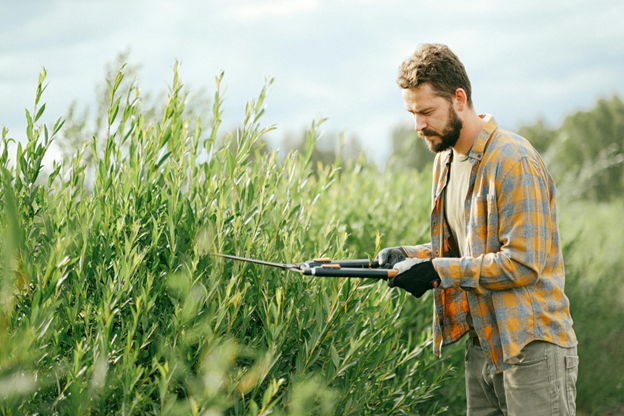Maintaining an organized and efficient garden involves more than just planting and weeding. Properly storing your gardening tools is crucial for extending their lifespan and ensuring your workspace remains safe and tidy. Here are some authoritative and practical tips to help you store your gardening tools effectively.
Assess and Organize Your Tools
The first step in effective garden tool storage is to assess what you have. Take stock of all your tools, from small hand tools to large equipment. Group similar items together to get a clear picture of what you own. This process will also help you identify any duplicates or worn-out tools that need replacement.
Once you’ve assessed your tools, consider their frequency of use. Tools used regularly, like pruners and trowels, should be easily accessible. Those used less often, such as post-hole diggers or hedge trimmers, can be stored in less accessible areas. An organized approach ensures you can quickly find what you need without rummaging through clutter.
Utilize Vertical and Overhead Space
Maximizing vertical and overhead space is essential in any storage solution. Walls and ceilings offer valuable real estate that often goes underutilized. Installing wall-mounted racks, shelves, and hooks can free up floor space and keep tools organized.
For smaller tools, consider using pegboards. Pegboards are highly customizable and allow you to arrange tools in a way that makes sense for your workflow. Labeling the pegboard ensures that tools are returned to their rightful place after use, maintaining order.
Garden Sheds and Storage Units
A garden shed or an external storage unit can be a game-changer for keeping your gardening tools safe and organized. When choosing a shed, consider the size and material. Metal and plastic sheds are durable and require less maintenance than wooden ones. However, wooden sheds can blend more aesthetically with your garden landscape.
Ensure your shed has adequate ventilation to prevent moisture buildup, which can cause rust and damage to your tools. Shelving units and wall organizers inside the shed can maximize space and keep tools easily accessible. For those with limited backyard space, renting a personal storage unit for your Gardening Storage can be an excellent alternative. These units provide secure, climate-controlled environments to protect your tools from the elements.
Consider adding a workbench to your shed. A workbench provides a dedicated space for potting plants, sharpening tools, and other gardening tasks. Drawers and cabinets below the workbench can store smaller tools and supplies, keeping your workspace clutter-free.
Maintenance and Safety Tips
Proper maintenance of your tools is as important as how you store them. Clean your tools after each use to remove soil and plant residues that can cause rust and decay. Dry them thoroughly before storing to prevent moisture-related damage.
Regularly sharpen blades and oil moving parts to keep your tools in optimal working condition. Store tools with blades or sharp edges in protective sheaths or covers to prevent accidents. Hanging tools with pointed ends on pegboards or hooks can also reduce the risk of injury.
Ensure that your storage area is child-proofed if you have young children. Store hazardous items such as pesticides, fertilizers, and sharp tools out of their reach. Lockable cabinets or storage boxes can provide an extra layer of safety.
Storing your gardening tools efficiently requires a combination of organization, proper use of space, and regular maintenance. By assessing and organizing your tools, utilizing vertical and overhead space, considering garden sheds or storage units, and adhering to maintenance and safety tips, you can create a tidy and safe storage system. Implementing these strategies will not only extend the life of your tools but also enhance your gardening experience by making your tools easy to find and use.


Recent Comments